Fable II Review
Fable II
The original Fable never quite lived up to gamers' admittedly high expectations, Fable 2 sets that right.
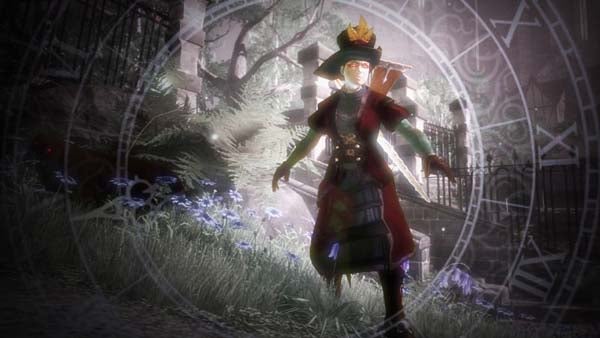
Verdict
Key Specifications
- Review Price: £36.98
”’Platform: Xbox 360”’
When Lionhead’s Peter Molyneux was promoting the original Fable, he often described the aim of the game as to make you feel like a hero. He didn’t mean by this that you would feel like someone else’s idea of a hero, but like your own idea. You would create the character and forge his destiny. You would decide whether to be good or evil, and your choices would change the world for better or worse. As you adventured the world would also leave its mark on you, aging you, scarring you, the goodness or darkness within you echoed in your face and body. We would all start Fable with the same small boy, but would end with several million very different heroes, each reflecting who we were and how we played.
Maybe the concepts weren’t solid enough, maybe the technology wasn’t ready, but Fable only half delivered on that ideal. For all that it was an enjoyable, accessible action RPG, brimming with neat features, it felt too small, the consequences of your actions too obvious or limited, to truly make you feel like a hero who could shape a world. Such was the fuss made about the loss of relatively minor features, like the ability to plant acorns and watch them grow into mighty oaks, that Peter Molyneux has seemed uncharacteristically shy about the accomplishments of this Xbox 360 sequel. Perhaps he needn’t have been. Fable 2 is everything Fable should have been, and arguably more.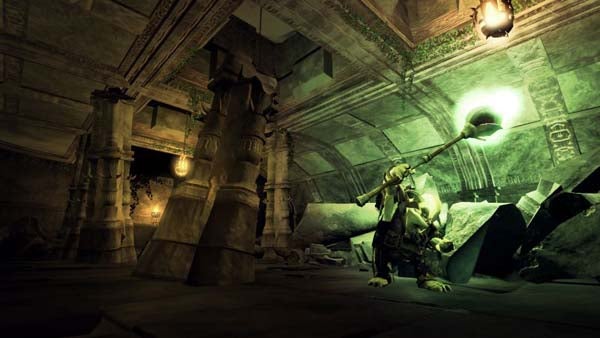
It’s not as radical a reworking as you might think. Fable felt rooted in a tradition of British folk tale and legend rather than the Tolkien-esque high fantasy adopted by so many RPGs, and Fable 2 follows along the same lines. While the kingdom of Albion has its share of misty mountains and gothic ruins, the scenery is dominated by the kind of woodland, town and farmland that fits into a very British rustic idyll. Nor is this necessarily a grimmer, darker tale. Yes, the setting has moved forward 300 odd years and there’s a touch of Dickens around the prologue, but the gentle, genre-mocking wit and toilet humour that made the original so unique hasn’t disappeared. While Fable 2 has a stronger plot than its forebear and a slightly deeper, more emotional tone, if you want to play the kind of hero who finds breaking wind at a funeral hilarious, then the game will be all too pleased to accommodate you.
So what has changed? Well, clearly the graphics have had a major lift from the move to the 360. The characters are more cartoon-like than realistically detailed, but this is the most breathtaking fantasy world I’ve seen since Viking: Battle for Asgard, with gorgeous, deliberately overdone lighting that changes to reflect the time of day, rich vegetation and lovely, gleaming water. From the opening winter scenery it’s a feast, and Albion rivals Azetoth as a place where you just want to get out, explore and see the world. It’s the difference between technical skill and genuine artistry. That’s good, because there’s a much bigger world to see. Fable 2 doesn’t throw it all at you at once, instead drip feeding you new areas as you grow in strength and experience while giving you ample reason to return and see the old ones. Between a useful quest journal and a brilliant trail effect that leads you to your next objective, it’s practically impossible to get too lost. Don’t worry. You’ll still want to get off the beaten track from time to time. Part of the pleasure of the game is finding your own way around and – unlike so many other RPGs – the world is densely packed with villains, varmints and treasures to discover.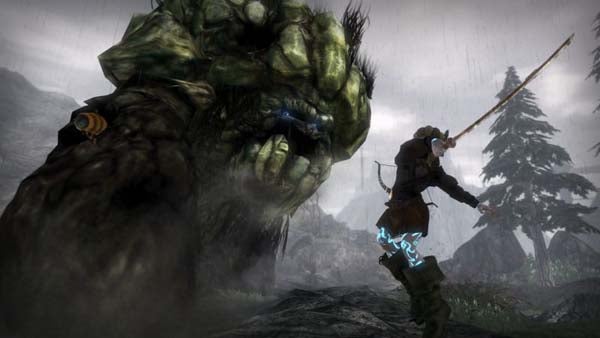
This is partly where your dog comes in. Lionhead and Molyneux wanted man’s best friend to engage your emotions and give you an experience of unconditional love. That’s probably going a bit far, but the dog is certainly a smart and useful little critter, warning you of enemies, fighting at your side, seeking out hidden treasure chests and finding you worthwhile spots where a little digging might bring a big reward. Of course, it helps if you treat the little fellow well, heal him, give him praise and read appropriate canine training literature – you’ll be surprised what he can do with a little education. Whatever the dog’s value as an emotional focus, he’s certainly one of the most ingenious in-game feedback mechanisms I’ve ever seen.
On top of this, the structure of the game just seems to work better this time around. One of Fable’s problems was that all the stuff about living the hero (or antihero) lifestyle still felt a little peripheral. Yes, you could get a wife, buy a house, have kids and treat the family with respect or downright meanness. Yes you could earn a reputation as the saviour or scourge of the common man, making friends or spreading terror wherever you went. But at the end of the day this seemed like the background to a slightly short main storyline which went in much the same direction whatever you did.
In Fable 2 things are different. This stuff isn’t part of the game; in a way, it is the game. Earning money as a blacksmith, woodsman or bounty hunter isn’t just a sideline activity, it’s entertaining in its own right. What’s more, without the extra cash you’ll struggle to achieve some key objectives. Most of the employment opportunities really come down to very simple tests of timing, but it’s surprising how compulsive these can be when you’re running short of gold. I knew I was hooked when, at around eight hours in, I’d virtually forgotten about the current main story mission because I was too caught up bounty hunting in order to get enough dough to buy a new home so that my new found wife would stop moaning about our current habitation and settle down and have some kids. 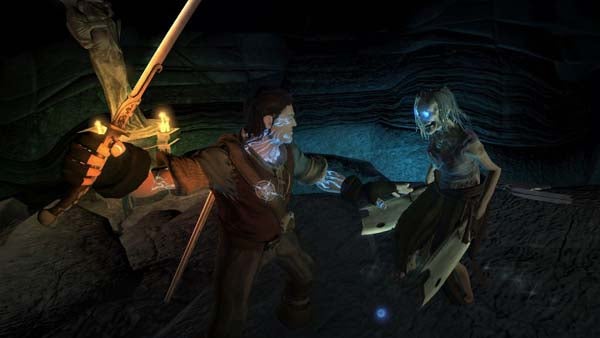
This isn’t a game where you’re obsessing about your next sword of awesome valour or bracers of intransigence, +1. No, it’s the sort of game where you’re worried that a diet of pies has made you fat and earned you the title of ‘Salad Dodger.’ Your reputation matters. Your clothes and hairstyle matter. What people call you matters, and what your family (or families) think of you matters. Outside of a handful of MMORPGS, where the social element always has an impact, I can’t think of another game where this is the case.
And while the effect of hero on world and world on hero works in much the same way as it did before, with fairly simple binary good or evil choices that move you in one direction or the other, it’s all a bit more convincing this time around. The moral dilemmas actually make you think a bit harder, and there are times when the consequences of an evil act actually make you feel slightly bad about the result (though, personally, I can eat as many crunchy chicks as the Temple of Shadow can dish out). Shout-outs, taunts and acclamations are a little more varied and believable, and the system of mimed expressions you use to communicate with your fellow man and woman give you more options and work more effectively. Whether you’re chuffing, grimacing, slapping, posing, seducing or dancing a jig, there’s a lot of fun to be had just messing with the local population.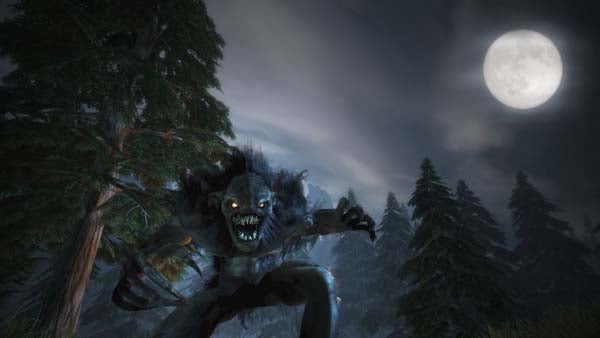
All of this stuff is very exciting, and the development of storyline and missions and the development of your powers are incredibly satisfying. Yet what I think really makes Fable 2 stand out is that it’s a game designed for everyone to love. And by that I don’t just mean ‘everyone who likes action RPGs or fantasy adventure games’ but your partner, your casual gaming mates, your Mum and Dad – everyone. It seems that everything is tailored so that you don’t have to sweat about the small stuff – the intricacies of the combat system or inventory management – leaving you to get on and enjoy all the big stuff.
Take combat, for example. Where other games would give you a range of buttons and modifiers for different attacks. Fable 2 gives you one button to fire your missile weapon, one button with which you wield your close combat weapon and one button with which to use magic. What attack or block you use or spell you deploy depends entirely upon context and timing. Tap the magic button and it lets loose your basic spell. Hold then release, and you charge your way up through the levels. Through simple taps and holds you can let loose a barrage of slashes, thrusts and parries, impaling fallen foes or sweeping through an enemy’s defences with an impressive, unblockable swing. Anyone can pick this up and make it look like they know what they’re doing, though you’ll get experience bonuses for fighting well. That attitude sums up Fable 2 all over: it’s in with the carrot, out with the stick.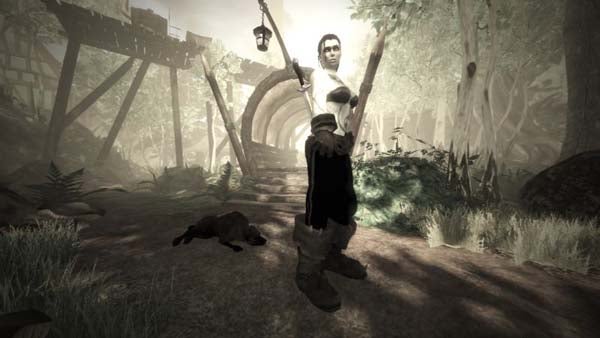
The most controversial aspect of this, in a game where instant travel and carefully managed enemy levels already take a lot of the headache out of playing, is that it seems to be impossible to die. Get swarmed by enemies or whacked down by a high-end villain and you’ll hop back up, slightly poorer in experience terms, but basically ready to get back in there. Some hardcore gamers – the sort who felt the vita chambers completely ruined Bioshock – are going to complain that this is dumbing down. If it is, then let’s have more of it. Not once have I felt like I’ve wasted time or been frustrated playing Fable 2. The combat is challenging enough to be enjoyable, but the days of loading, saving and returning to base to heal are out of the window. If you stock up on potions and healing foods, it’s only because being knocked down is, somehow, a bit embarrassing.
I could go on. There are a dozen more great ideas in Fable 2, ranging from the easy to understand way in which you level up spells and combat skills with experience to the way that context sensitive shortcut controls make it easy to heal yourself or dig a hole without having to wade through inventory screens beforehand. The great thing about Fable 2 is that you don’t have to think about these things because somebody at Lionhead has already thought about them for you. All you have to do is get out there, explore, try things out, be good, be bad, be brave, be silly. Just be your own sort of hero, in other words. 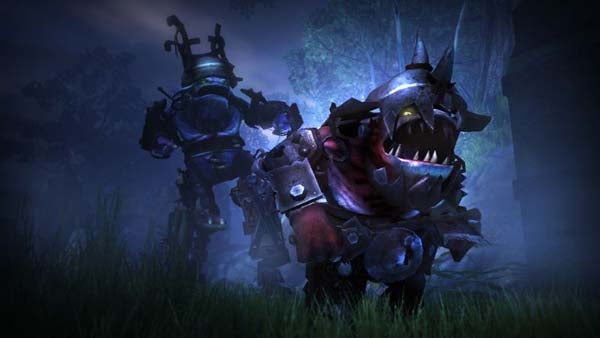
In terms of niggles, the only things I can come up with are the odd spots of pop-in and slowdown, and a few moments where my hero or an enemy got stuck on scenery. This is a big game and one you’ll be happy to continue with even once the main quest has ended. If you have a 360 or some means of gaining access to Microsoft’s hardware, this is one game you really don’t want to miss.
”’Verdict”’
The most appealing, entertaining and accessible action RPG ever made, rivalling Zelda for side quest tomfoolery, but with a layer of open-world depth that even Nintendo has never aspired to. Finally, Lionhead delivers on its promise.

